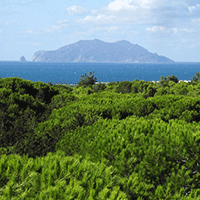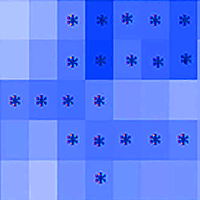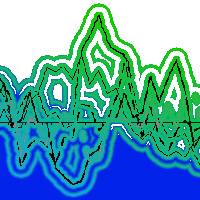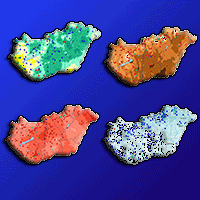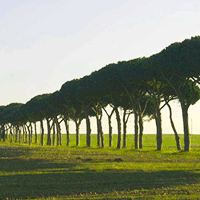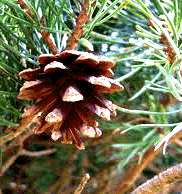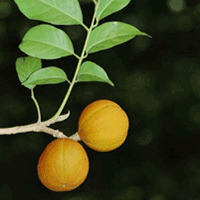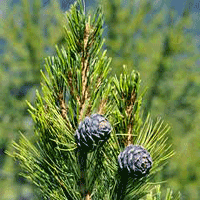
Impacts of climate change on the establishment, distribution, growth and mortality of Swiss stone pine (Pinus cembra L.)
S Boden (1), P Pyttel (1), CS Eastaugh (2)
iForest - Biogeosciences and Forestry, Volume 3, Issue 4, Pages 82-85 (2010)
doi: https://doi.org/10.3832/ifor0537-003
Published: Jul 15, 2010 - Copyright © 2010 SISEF
Review Papers
Collection/Special Issue: NFZ Summer School 2009 - Birmensdorf (Switzerland)
Long-term ecosystem research: understanding the present to shape the future
Guest Editors: Marcus Schaub (WSL, Switzerland)
Abstract
Anticipated future climate changes are expected to significantly influence forest ecosystems, particularly in treeline ecotones. Climate change will have both direct and indirect effects on the future distribution of alpine tree species, some of which will be positive and others negative. Although increased temperatures are on the whole likely to have a positive impact on growth and distribution of Swiss stone pine (Pinus cembra L.), indirect effects that influence seed dispersal may threaten the population viability of species. The complexity of the interrelations between climatic and non-climatic factors demands further research, which should include long-term monitoring.
Keywords
Swiss stone pine, Treeline, Climate change, Distribution shift, Tree growth, Mortality
Authors’ Info
Authors’ address
Institute of Silviculture, Albert-Ludwigs University Freiburg, Tennenbacher Straße 4, D-79106 Freiburg (Germany)
Corresponding author
Paper Info
Citation
Boden S, Pyttel P, Eastaugh CS (2010). Impacts of climate change on the establishment, distribution, growth and mortality of Swiss stone pine (Pinus cembra L.). iForest 3: 82-85. - doi: 10.3832/ifor0537-003
Academic Editor
Marcus Schaub
Paper history
Received: May 25, 2010
Accepted: May 31, 2010
First online: Jul 15, 2010
Publication Date: Jul 15, 2010
Publication Time: 1.50 months
Copyright Information
© SISEF - The Italian Society of Silviculture and Forest Ecology 2010
Open Access
This article is distributed under the terms of the Creative Commons Attribution-Non Commercial 4.0 International (https://creativecommons.org/licenses/by-nc/4.0/), which permits unrestricted use, distribution, and reproduction in any medium, provided you give appropriate credit to the original author(s) and the source, provide a link to the Creative Commons license, and indicate if changes were made.
Web Metrics
Breakdown by View Type
Article Usage
Total Article Views: 62782
(from publication date up to now)
Breakdown by View Type
HTML Page Views: 52474
Abstract Page Views: 4336
PDF Downloads: 4699
Citation/Reference Downloads: 39
XML Downloads: 1234
Web Metrics
Days since publication: 5637
Overall contacts: 62782
Avg. contacts per week: 77.96
Citation Metrics
Article Citations
Article citations are based on data periodically collected from the Clarivate Web of Science web site
(last update: Mar 2025)
Total number of cites (since 2010): 23
Average cites per year: 1.44
Publication Metrics
by Dimensions ©
Articles citing this article
List of the papers citing this article based on CrossRef Cited-by.
References
Tree water relations and climatic variations at the alpine timberline: seasonal changes of sap flux and xylem water potential in Larix decidua Miller, Picea abies (L.) Karst and Pinus cembra L.. Annals of Forest Science 55: 159-172.
CrossRef | Gscholar
High-altitude forest sensitivity to global warming: results from long-term and short-term analyses in the Eastern Italian Alps. In: “The Impacts of Climate Variability on Forests”. Springer, Berlin, Heidelberg, pp. 318.
Gscholar
Adaptations of forests to climate change: A multidisciplinary review. IUFRO Occasional Paper 21, International Union of Forest Research Organisations, Vienna.
Gscholar
Vegetation Mitteleuropas und der Alpen in ökologischer, dynamischer und historischer Sicht. UTB, Stuttgart, pp. 1056.
Gscholar
Variation in the chloroplast DNA of Swiss stone pine (Pinus cembra L.) reflects contrasting post-glacial history of populations from the Carpathians and the Alps. Journal of Biogeography 36: 1798-1806.
CrossRef | Gscholar
Die Lebensgemeinschaft von Tannenhäher, Nucifraga caryocatactes (L.), und Arve, Pinus cembra L., und ihre forstliche Bedeutung in der oberen Gebirgswaldstufe. Berichte Eidgenössische Forschungsanstalt Wald, Schnee und Landschaft WSL 241, pp. 74.
Gscholar
Effects of climate change on mountain ecosystems - upward shifting of alpine plants. World Resource Review 8 (3): 382-390.
Gscholar
Effects of Climate change on the alpine and nival vegetation of the Alps. Journal of Mountain Ecology 7: 9-12.
Gscholar
Modeling cembran pine ecosystems in Austria. Austrian Journal of Forest Science 122 (1): 37-54.
Gscholar
Are the distributions of species determined by failure to set seed? In: “Fruit and seed production” (Marshall J, Grace J eds). Cambridge University Press, Cambridge, UK, pp. 256.
Gscholar
A guide to the vegetation of Britain and Europe. Oxford Univ. Press, Oxford, UK, pp. 238.
Gscholar
Structure and long-term development of subalpine Pinus montana Miller and Pinus cembra L. forests in the central European Alps. Forstwissenschaftliches Centralblatt 122: 219-230.
Gscholar
Climate and water relations of plants in the sub-alpine region. In: “The water relations of plants” (Rutter AJ, Whitehead FH eds). Blackwell, Oxford, UK, pp. 153-166.
Gscholar
Physiological ecology of the alpine timberline. Springer-Verlag, New York, USA.
Gscholar
EUFORGEN Technical Guidelines for genetic conservation and use for Swiss stone pine (Pinus cembra L.). International Plant Genetic Resources Institute, Rome, Italy, pp. 6.
Gscholar

